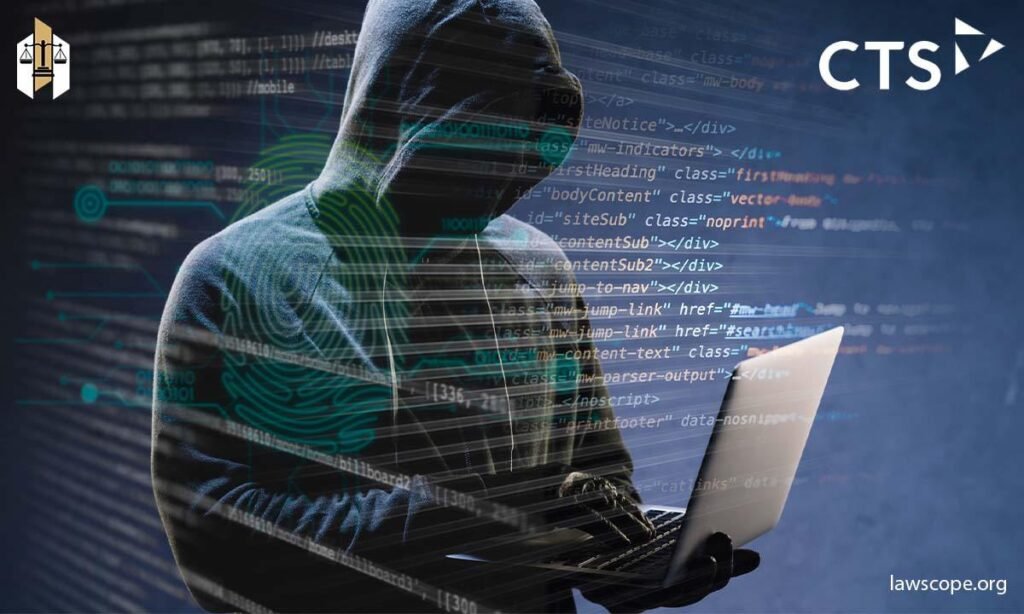
Understanding CTS Cyber Attacks: A Stealthy Menace
CTS cyber attacks represent a covert menace, operating stealthily within the digital landscape.
These attacks, characterized by their simulation of real-world threats, pose a significant risk to organizations, including law firms.
Understanding the stealthy nature of CTS attacks is essential for businesses to fortify their defenses, as these threats often exploit vulnerabilities discreetly, demanding a proactive approach to cybersecurity.
Defining CTS Cyber Attacks
Cyberattacks with CTS entail a simulated cyberthreat, in which the attackers mimic actual tactics for breaking into and compromising a target’s digital infrastructure.
Because legal firms handle sensitive and confidential information, these attacks are especially concerning to them.
Cybercriminals who commit CTS cyberattacks frequently make use of security system flaws in an attempt to obtain illegal access to client data, case information, and other private documents.
The Anatomy of a CTS Cyber Attack on Law Firms
CTS cyber attacks typically follow a well-defined pattern.
First, threat actors conduct meticulous research on the law firm’s digital footprint, identifying potential weak points.
Subsequently, they deploy sophisticated phishing emails, malware, or ransomware to infiltrate the firm’s network.
Once inside, attackers may move laterally, requesting entry to sensitive client data and legal documents.
The ultimate goal is often financial gain, extortion, or the theft of intellectual property.
CTS Cyber Attacks and The Legal Ramifications
CTS cyber attacks on law firms can have severe legal consequences.
Breaches of client confidentiality and privacy laws may occur, potentially leading to lawsuits from affected clients.
Increased regulatory scrutiny is frequently the result, and law firms risk fines and reputational harm.
Respecting data privacy regulations is essential since breaking them can have serious legal ramifications.
Overall, the legal ramifications of CTS cyber attacks highlight the need for robust preventive measures and adherence to cybersecurity best practices within law firms.
Legal Consequences For Law Firms
The fallout from a CTS cyber attack on a law firm can be profound.
Legal repercussions could include breaking privacy laws, violating client confidentiality, and possibly facing litigation from impacted clients.
Law firms are supposed to protect confidential information, and any breach of this trust could have serious repercussions.
Regulatory Inspection and Complying Issues
Following a cyberattack using CTS malware, legal businesses can come under more regulatory scrutiny.
Organizations are subject to stringent standards to secure sensitive information, including GDPR and other state-level rules.
Heavy fines and reputational harm to a legal company may arise from noncompliance with these regulations.
Preventing CTS Cyber Attacks on Law Firms
Preventing CTS cyber attacks on law firms requires a proactive stance.
This entails making investments in strong cybersecurity defenses including firewalls, encryption methods, and advanced threat detection systems.
Building knowledge about potential threats and recommended procedures for protecting sensitive information through employee training is equally critical.
Collaborating with cybersecurity experts ensures ongoing assessments of security and the development of effective incident response plans.
A comprehensive approach helps law firms stay ahead of the dynamic CTS threat landscape, securing their digital infrastructure and maintaining client trust.
Investing in Cybersecurity Measures
To lessen the risk of CTS intrusions, legal businesses should prioritize implementing robust cybersecurity safeguards.
This calls for the installation of firewalls, encryption tools, and advanced threat detection systems.
Through frequent security audits and penetration tests, companies may detect vulnerabilities and proactively address possible flaws.
Employee Training and Awareness
Cyberattacks continue to be significantly influenced by human mistakes.
To keep staff members informed on the newest cyber threats, phishing schemes, and best practices for protecting confidential data, law firms need to make significant investments in extensive training programs.
Creating a cybersecurity-aware culture is essential to stopping CTS attacks.
Collaboration With Cybersecurity Experts
Law companies should work with cybersecurity professionals and consultants because cyber risks are constantly changing.
These experts could support the creation of incident response strategies, provide guidance on new risks, and conduct regular evaluations of the company’s security posture.
Working proactively with cybersecurity specialists guarantees that legal companies stay ahead of the changing world of CTS threats.
The Evolving Legal Landscape in Response to CTS Cyber Attacks
The growing threat of CTS hacks is causing a rapid change in the legal situation.
Realizing how severe these cyber threats are, governments and law enforcement organizations are trying to make cybersecurity laws stronger and tougher on those who break them.
CTS attacks are now covered by insurance covers, giving impacted companies a financial safety net.
International cooperation between governments, law enforcement, and legal professionals is also fortifying the group’s response to these dynamic cyber threats.
The legal community is currently engaged in developing a more adaptable and robust framework to fend off the increasingly dangerous threat of CTS cyberattacks.
Legal Repercussions For Cyber Criminals
could support the Governments and law enforcement organizations throughout the world are beginning to recognize how dangerous cyber threats like CTS attacks may be.
Initiatives to strengthen cybersecurity laws and impose more severe penalties on cyber criminals are underway.
Law firms should take solace in the fact that legal frameworks are evolving to provide victims’ remedies and punish offenders accountable.
Insurance Policies For Cybersecurity Incidents
As CTS cyber attacks become more prevalent, insurance companies are adapting their policies to include coverage for cybersecurity incidents.
Law firms are advised to explore comprehensive cybersecurity insurance to mitigate financial losses resulting from data breaches, business interruptions, and legal liabilities.
International Collaboration on Cybersecurity
Given the transnational nature of cyber threats, international collaboration is crucial in the battle against CTS intrusions.
Guidelines for sharing threat intelligence and extraditing cybercriminals are being developed in partnership with governments, law enforcement agencies, and legal experts.
These collaborations strengthen the team’s ability to defend against cyberattacks.
Discover More: AJJB Law: Truth, Reviews, Contact, Scam Allegations
FAQ (Frequently Asked Questions)
I believe after going through this article, you get a deep understanding of the topic.
Now, here are some commonly asked questions that you might also have in your head, especially in the context of CTS cyber attack law firms.
So, let’s explore them.
Q1. What is a CTS Cyber Attack, and Why Are Law Firms Particularly Vulnerable?
A1. Cyber Threat Simulation, or CTS for short, is a kind of cyberattack in which adversaries imitate real-world strategies to breach a target’s digital defenses.
The sensitive and secret nature of the information law firms manage makes them ideal targets for possible exploitation.
Q2: How Do CTS Cyber Attacks Unfold on Law Firms?
A2. CTS attacks typically begin with meticulous research on a law firm’s digital landscape.
Threat actors then deploy tactics like phishing emails or malware to gain unauthorized access.
Once inside, attackers may move laterally, targeting sensitive client data and legal documents, often with the aim of financial gain through extortion or intellectual property theft.
Q3. What Are The Legal Consequences of a CTS Cyber Attack on a Law Firm?
A3. The legal fallout from a CTS cyber attack on a law firm can include breaches of client confidentiality, violations of privacy laws, and potential lawsuits from affected clients.
The trust associated with safeguarding sensitive information is compromised, leading to reputational damage.
Q4. How Are Law Firms Addressing The Risk of CTS Cyber Attacks?
A4. By investing in strong cybersecurity safeguards, including advanced threat detection systems, personnel training, and working with cybersecurity specialists, law firms are reducing the danger of CTS cyberattacks.
Vulnerabilities are found by regular security audits and penetration tests, which enable a proactive approach.
Q5. What Regulatory Challenges Do Law Firms Face in The Aftermath of a CTS Cyber Attack?
A5. Law firms may face increased regulatory scrutiny, especially regarding compliance with data protection laws such as GDPR and state-level regulations.
Non-compliance can result in significant fines and damage to the firm’s standing in the legal community.
May You Like Also: Law Society Gazette: Insights, Updates, and in-Depth Legal Analysis
Conclusion
Law companies are increasingly facing the potential of CTS cyberattacks, which makes proactive, multifaceted cybersecurity measures necessary.
The specter of CTS cyber attack law firms, compelling a strategic shift towards fortified cybersecurity measures and heightened vigilance.
Law firms that understand the intricacies of these attacks, implement robust preventive measures, and stay abreast of the rapidly evolving legal landscape can fortify their defenses against this crafty adversary.
The accuracy of legal institutions around the world will be shielded by a collective commitment to cybersecurity best practices, personnel training, and international coordination as the legal business continues to struggle with the problems posed by CTS cyberattacks.
You May Like Also:



2 thoughts on “CTS Cyber Attack on Law Firms: Safeguard Strategies”